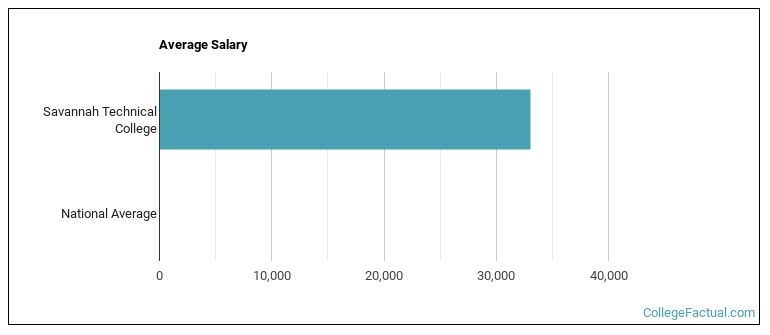 by our College Data Analytics Team
by our College Data Analytics Team
In its yearly rankings, College Factual analyzes over 2,000 colleges and universities to determine which ones are the best in a variety of categories, such as overall value, quality, diversity, which schools are the best for each major, and much more.
Savannah Technical College was awarded 9 badges in the 2025 rankings. The highest ranked major at the school is automobile/automotive mechanics technology/technician.
Explore the best ranked schools for the programs you are most interested in.
Savannah Tech is ranked #759 out of 2,152 schools in the nation for overall quality on College Factual's 2025 Best Colleges list.
Out of the 68 colleges in Georgia, Savannah Tech is ranked at #21.
If you are worried about getting into Savannah Technical College, don't be. The school has a liberal open admissions policy, which means you only need to meet basic requirements in order to be admitted. Still, be sure to submit a complete application and provide any other requested materials.
The student to faculty ratio is often used to estimate how much interaction there is between professors and their students at a college or university. At Savannah Technical College, this ratio is 14 to 1, which is on par with the national average of 15 to 1. That's not bad at all.
When estimating how much access students will have to their teachers, some people like to look at what percentage of faculty members are full time. This is because part-time teachers may not have as much time to spend on campus as their full-time counterparts.
The full-time faculty percentage at Savannah Technical College is 40%. This is lower than the national average of 47%.
The freshmen retention rate is a sign of how many full-time students like a college or university well enough to come back for their sophomore year. At Savannah Technical College this rate is 55%, which is a bit lower than the national average of 68%.
During the 2017-2018 academic year, there were 3,649 undergraduates at Savannah Tech with 1,237 being full-time and 2,412 being part-time.
The net price is calculated by adding tuition, room, board and other costs and subtracting financial aid.Note that the net price is typically less than the published for a school. For more information on the sticker price of Savannah Tech, see our tuition and fees and room and board pages.
The student loan default rate at Savannah Tech is 10.0%. This is about the same as the national default rate of 10.1%.
Get more details about paying for Savannah Technical College.

See which majors at Savannah Technical College make the most money.
Get more details about the location of Savannah Technical College.

Contact details for Savannah Tech are given below.
| Contact Details | |
|---|---|
| Address: | 5717 White Bluff Rd, Savannah, GA 31405-5594 |
| Phone: | 912-443-5700 |
| Website: | www.savannahtech.edu/ |
| Most Popular Majors | Bachelor’s Degrees | Average Salary of Graduates |
|---|---|---|
| Vehicle Maintenance & Repair | 252 | NA |
| Liberal Arts General Studies | 235 | NA |
| Precision Metal Working | 216 | NA |
| Cosmetology | 197 | NA |
| Practical Nursing & Nursing Assistants | 165 | NA |
| Allied Health & Medical Assisting Services | 163 | NA |
| Ground Transportation | 110 | NA |
| Information Technology | 94 | NA |
| Criminal Justice & Corrections | 85 | NA |
| Health & Medical Administrative Services | 74 | NA |
Online courses area a great option for busy, working students as well as for those who have scheduling conflicts and want to study on their own time. As time goes by, expect to see more and more online learning options become available.
In 2022-2023, 2,122 students took at least one online class at Savannah Technical College. This is a decrease from the 2,144 students who took online classes the previous year.
| Year | Took at Least One Online Class | Took All Classes Online |
|---|---|---|
| 2022-2023 | 2,122 | 987 |
| 2021-2022 | 2,144 | 1,134 |
| 2020-2021 | 2,722 | 1,570 |
| 2018-2019 | 1,632 | 491 |
Learn more about online learning at Savannah Technical College.
Footnotes
*The racial-ethnic minorities count is calculated by taking the total number of students and subtracting white students, international students, and students whose race/ethnicity was unknown. This number is then divided by the total number of students at the school to obtain the racial-ethnic minorities percentage.
References
More about our data sources and methodologies.